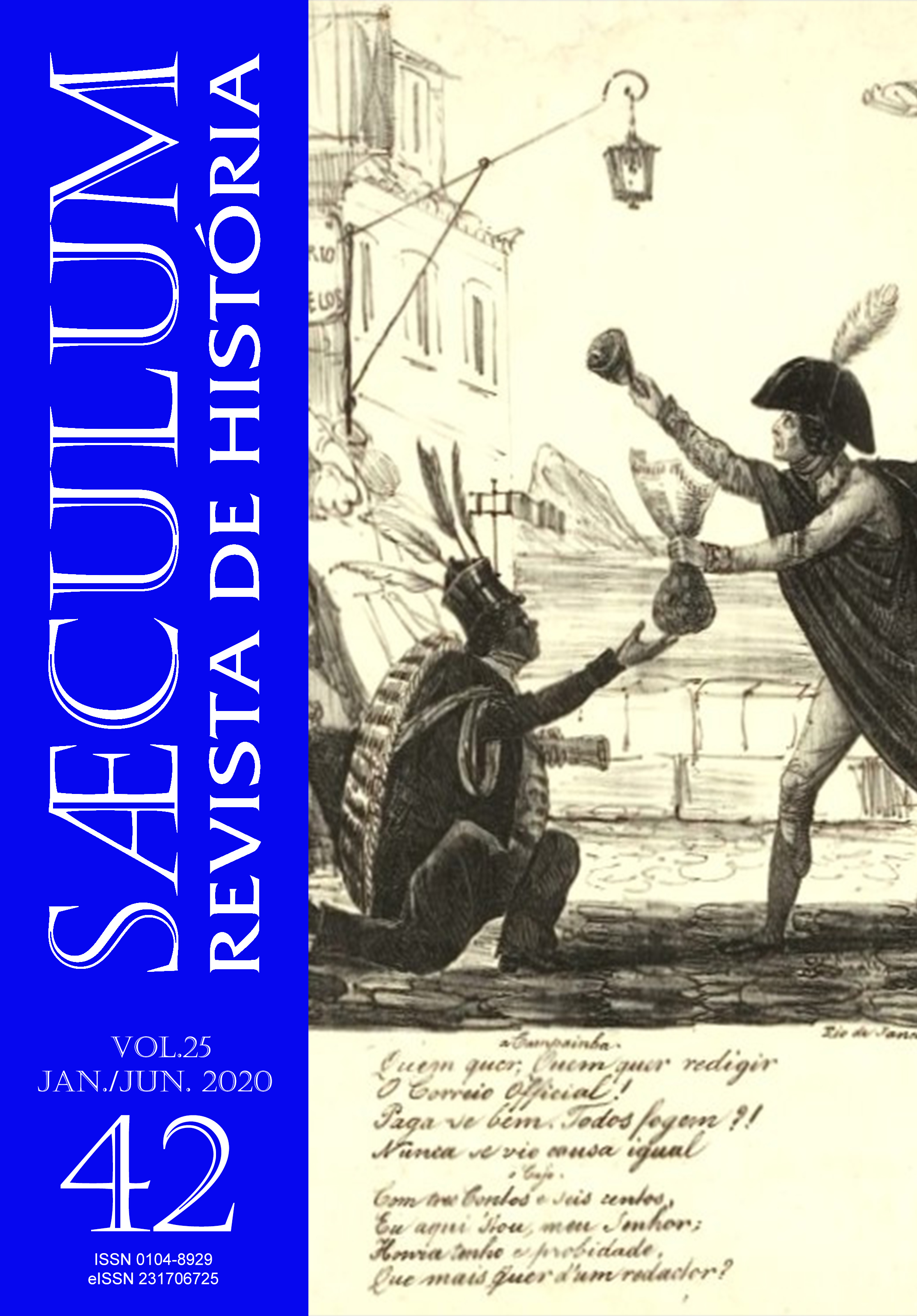Medieval hybrids beings:
the arpies figural revelation in the Commedia by Dante Alighieri
DOI:
https://doi.org/10.22478/ufpb.2317-6725.2020v25n42.48112Keywords:
Harpies, Commedia, PresenceAbstract
The medieval imaginary is full of ancient mythological elements that were aggregated by thought due to resistance and the inheritance movement linked to their presence. Dante’s Commedia has such past presentification tied to the mental image and thus present in the medieval imaginary. The allegorical presence of the hybrid beings or guardians of Dante’s Inferno, the first part of the work, is made according to the intertextuality of the latin poets who were Dante’s autoritas. However, the poet was also inserted in the context in which animals and hybrids referred to vestiges of divine presences associated with human behavior, as signs of its postmortem figuration or the way divine justice was organized. The aim of this paper is to investigate the figural revelation of harpies presented in the second level of the seventh circle of hell described in Commedia: Inferno, as punichers of the souls of suicides. The analysis will focus on the presence of ancient poets as pre-figuration, on Dante’s poetic figuration and on the medieval imaginary, as in the case with their presence in sculpures and bestiaries.
Downloads
References
AGOSTINHO. Cidade de Deus. Volume I. Lisboa: Fundação Calouste Gulbenkian, 1996.
ALIGHIERI, Dante. A Divina Comédia. Traduzida, anotada e comentada por Cristiano Martins. Belo Horizonte: Itatiaia, 1991.
ALIGHIERI, Dante. Inferno. A cura di Emilio Pasquini e Antonio Guaglio. Milano: Garzanti, 2014.
ALIGHIERI, Dante. Epístola XIII: Lettera a Cangrande. Disponível em: http://www.danteonline.it/italiano/opere2.asp?idcod=000&idope=7&idliv1=13&idliv2=0&idliv3=1&idlang=IT. Acesso em: 29 abr. 2020.
AUERBACH, Erich. Figura. São Paulo: Ática, 1997.
BENJAMIN, Walter. Origem do drama barroco alemão. São Paulo: Brasiliense, 1984.
BRUGNOLI, Giorgio. Le arpie di Dante. Aevum, anno 71, fasc. 02, p. 359-370, 1997.
COSTA, Daniel Lula. O duplo nas visões de mundo do pós-morte medieval: o caso da Divina Comédia. In: SILVEIRA, Aline Dias da; PAOLOZZI, Mariana (Orgs.). Ser, tempo e espaço: reflexões interdisciplinares sobre o medievo. Pelotas: NEPFIL, 2018. p. 92-116.
ECO, Umberto. Arte e beleza na estética medieval. Rio de Janeiro: Record, 2012.
LUCANO. Farsálias: Cantos de I a V. Introdução, tradução e notas por Brunno V. G. Vieira. Campinas: Unicamp, 2011.
FORTE, Alessandra. : I guardiani dei violenti nei manoscritti trecenteschi della Commedia tra comento scritto e comento figurato. Tesi di Laurea in Filologia Dantesca. Bologna: Università di Bologna, 2013.
GENTILI, Sonia. : Cerbero e le Arpie in Dante. In: CENTRO Italiano di Studi sul basso medioevo – Accademia Tudertina. I Monstra nell’Inferno dantesco: tradizione e simbologie. Spoleto: Centro Italiano di Studi sull’alto Medioevo, 1997. p. 177-203.
GUMBRECHT, Hans Elrich. Produção de presença: o que o sentido não consegue transmitir. Rio de Janeiro: Contraponto, 2010.
HOMERO. Odisseia. Tradução e prefácio de Frederico Lourenço. São Paulo: Penguin Companhia das Letras, 2011.
ISIDORO DE SEVILHA. Etimologias. Madrid: La Editorial Católica, 1951.
LATINI, Brunetto. Il tesoro. Tradução por Bono Giamboni. Vol. 1. Venezia: Co’tipi del gondoliere, 1839.
LIBER MOSTRORUM. A cura di Franco Porsia. Napoli: Liguori, 2012.
PASTOREAU, Michel. Bestiari del Medioevo. Torino: Einaudi, 2012.
SCARTAZZINI, G. A. Enciclopedia Dantesca. Vol.1. Milano: Ulrico Hoepli Editore-libraio dela Real Casa, 1896.
STEPHANY, William A. Dante’s Harpies: “tristo annunzio di futuro danno”. Italica, V. 62, n. 1, p. 24-33, 1985. DOI: https://doi.org/10.2307/478677
SCHMITT, Jean-Claude. Os vivos e os mortos na sociedade medieval. São Paulo: Companhia das Letras, 1999.
OVÍDIO. Metamorfoses. Tradução, introdução e notas por Domingos Lucas Dias. São Paulo: Editora 34, 2017.
PADOAN, Giorgio. Arpie. In: Enciclopedia Dantesca, 1970. Disponível em: http://www.treccani.it/enciclopedia/arpie_%28Enciclopedia-Dantesca%29/. Acesso em: 24 fev. 2019.
VIRGÍLIO. A Eneida. São Paulo: Atena editora, 1956.
WARBURG, Aby. Histórias de fantasma para gente grande: escritos, esboços e conferências. São Paulo: Companhia das Letras, 2015












